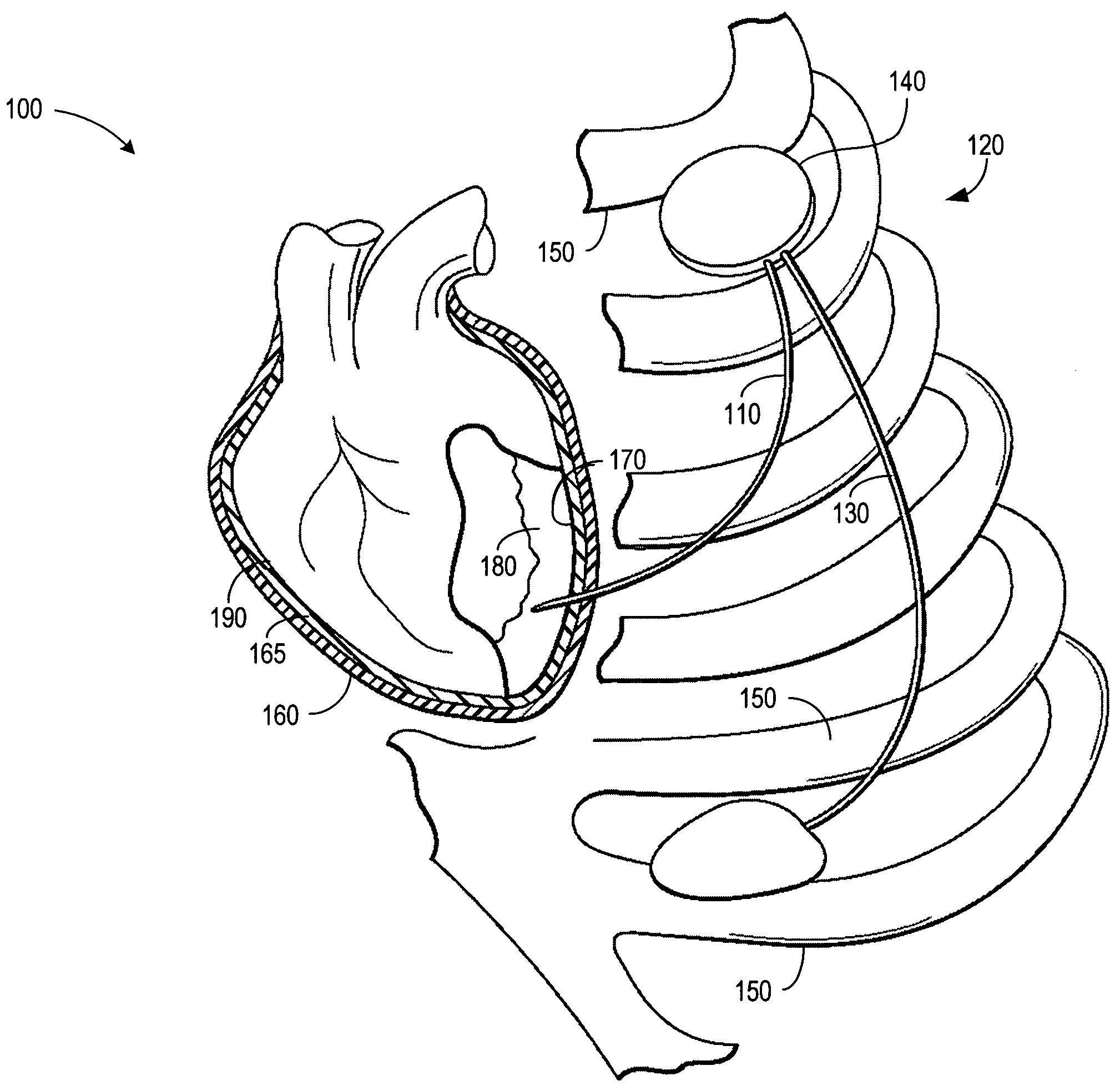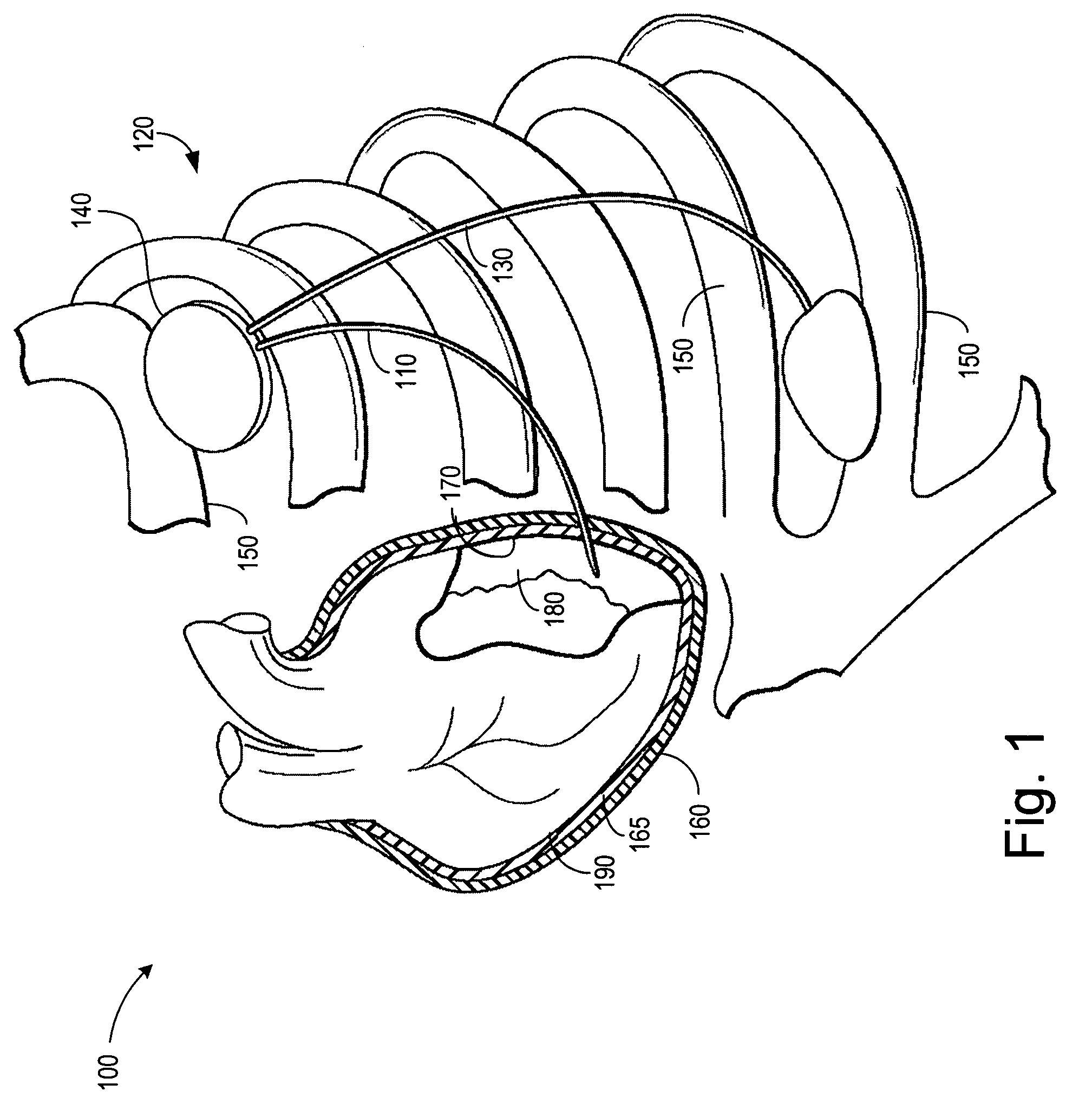Sensor guided epicardial lead
a technology of epicardial leads and sensors, which is applied in the direction of epicardial electrodes, internal electrodes, therapy, etc., can solve the problems of affecting the cardiac output of patients, affecting the cardiac function of patients, and not being good candidates for transvenous lead implantation
- Summary
- Abstract
- Description
- Claims
- Application Information
AI Technical Summary
Benefits of technology
Problems solved by technology
Method used
Image
Examples
Embodiment Construction
[0032]In the following description of the illustrated embodiments, references are made to the accompanying drawings, which form a part hereof, and in which is shown by way of illustration various embodiments in which the invention may be practiced. It is to be understood that other embodiments may be utilized, and structural and functional changes may be made without departing from the scope of the present invention.
[0033]Methods and devices employing an implantable cardiac lead in accordance with the present invention may incorporate one or more of the features, structures, methods, or combinations thereof described herein below. For example, devices and / or leads having sensing arrangements to provide feedback to the clinician during implantation may be implemented to include one or more of the features and / or processes described below. It is intended that such a device or method need not include all of the features and functions described herein, but may be implemented to include ...
PUM
 Login to View More
Login to View More Abstract
Description
Claims
Application Information
 Login to View More
Login to View More - R&D
- Intellectual Property
- Life Sciences
- Materials
- Tech Scout
- Unparalleled Data Quality
- Higher Quality Content
- 60% Fewer Hallucinations
Browse by: Latest US Patents, China's latest patents, Technical Efficacy Thesaurus, Application Domain, Technology Topic, Popular Technical Reports.
© 2025 PatSnap. All rights reserved.Legal|Privacy policy|Modern Slavery Act Transparency Statement|Sitemap|About US| Contact US: help@patsnap.com



